Healthy Rural Living
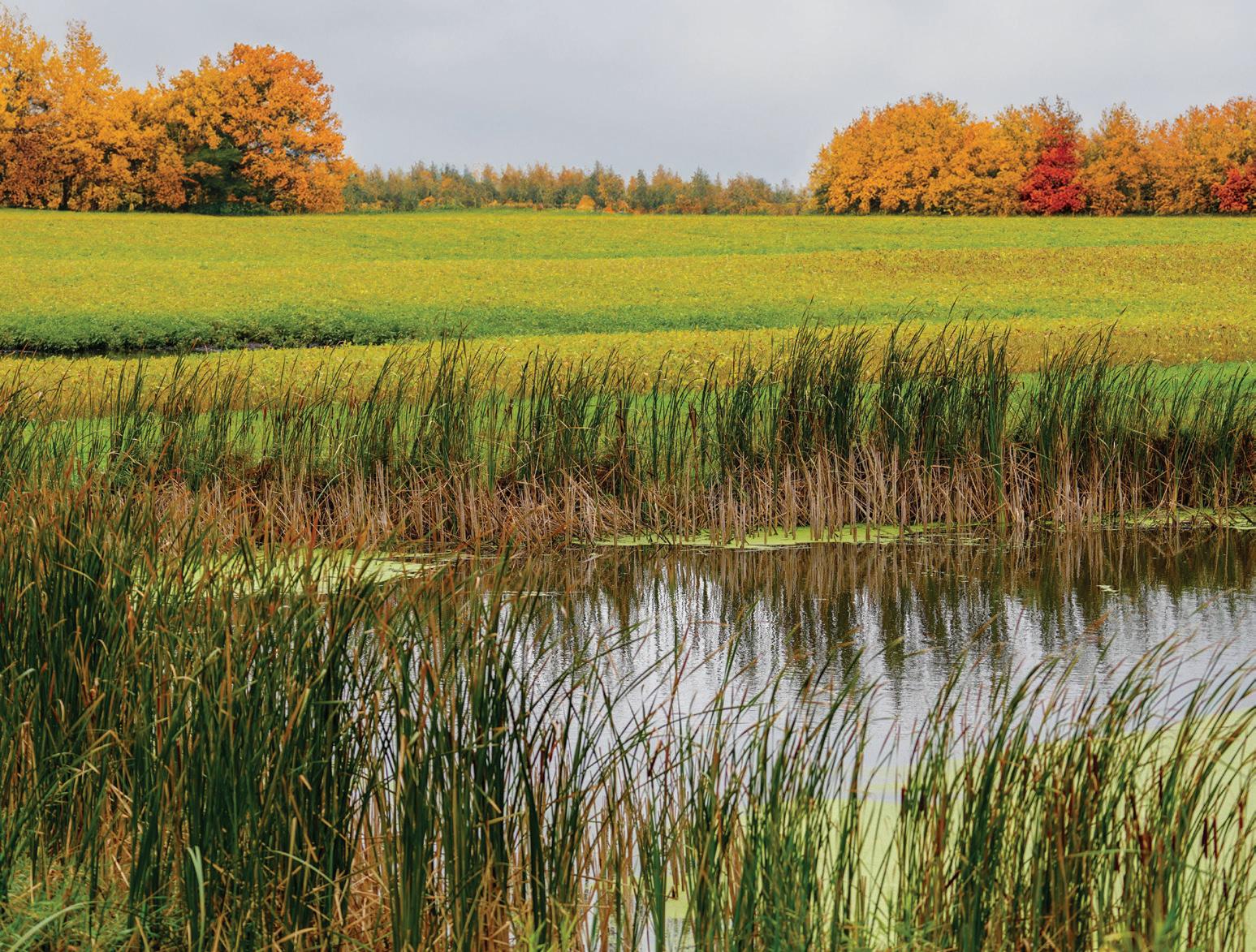
Keep this handy resource for information and tips on recycling, waste reduction and conservation practices that can help build a healthier rural environment.
Recycle the right way
Recycle right by focusing on the following items. Do not place recyclables in plastic bags. Put recyclables loose in your home recycling cart or use a paper bag. Make sure bottles, jars and containers are empty and dry (no food or liquid). Leave caps on bottles and containers and flatten boxes.
Recycle these items:
Paper & cardboard
• Corrugated cardboard
• Magazines and catalogs
• Mail and office papers
• Newspaper and inserts
• Paperboard (e.g., cracker boxes)
Cartons
• Milk and juice cartons
• Soup, broth and wine cartons
• Juice boxes
Glass bottles & jars
Metal cans
• Aluminum, tin and steel cans
Plastic bottles, containers & jugs
• Containers numbered 1, 2 and 5
• Soda, juice and water bottles
• Milk and juice jugs
• Margarine, cottage cheese, cream cheese and other tubs and lids
• Laundry detergent bottles and jugs
• Clear berry and produce containers

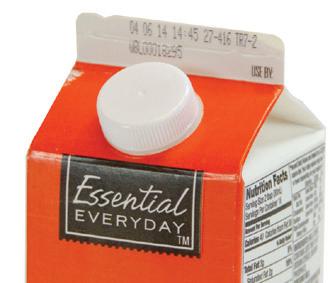
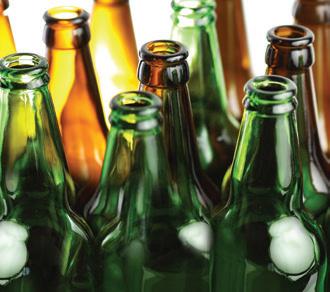

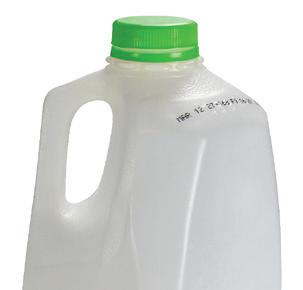
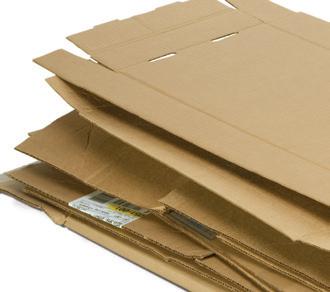

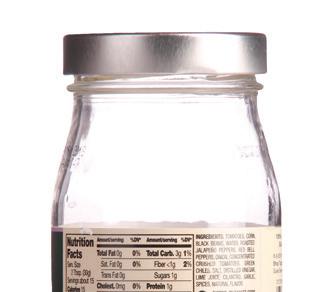
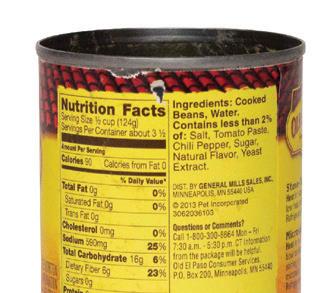
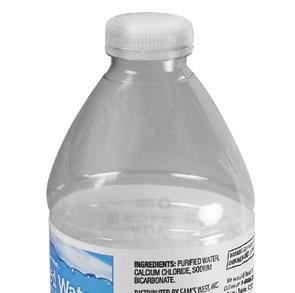
2
For more information, visit www.dakotacounty.us, search home recycling.
Recycling troublemakers
Knowing what to keep out of the recycling cart is just as important as what to put in — do NOT put these items in your recycling:
If you’re wondering about the disposal of a specific item, use the Recycling Guide at www.dakotacounty.us, search recycling guide.
What to do with holiday trash
During the holiday season, there’s a 25 percent increase of trash per household from gift wrap, packaging, decorations and more. Here’s how you should get rid of it:
Trash cart
• Bubble wrap and air pillows — or drop them off at a local retail store
• Garland and tinsel
• Glitter or foil wrapping paper and tissue paper
• Ribbons and bows

Recycling cart
• Cardboard and paper boxes, flatten
• Cards and envelopes
• Plain wrapping paper
Keep holiday string lights out of your recycling cart. Find drop-off locations and more at www.dakotacounty.us, search recycling guide.
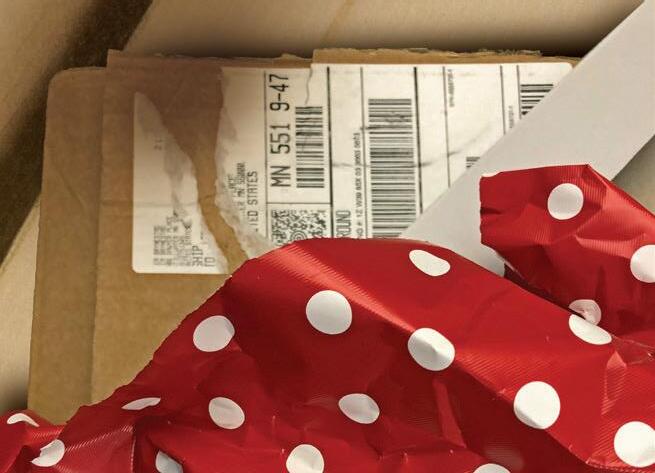
3
No Paper Cups, Plates or Napkins.
No Trash
No Styrofoam
No Batteries
No Shredded Paper
No Food or Liquids
No Tanglers, Cords, Hoses or Chains
No Plastic Bags or Plastic Wrap
Save food = save money
Nearly 40 percent of all food goes uneaten each year in the United States while also wasting the water, energy, labor and land used to grow it. That waste adds up as it costs the average family of four $1,500 per year. More food is wasted in our homes than any other part of the supply chain and luckily, we have the power to make a difference. Even small shifts in the way you shop, prepare and store food can help reduce wasted food and save money.
Learn more at www.dakotacounty.us, search save the food.
Free repair help
Get help repairing household items, clothes, electronics and more at a Fix-It Clinic. These monthly events help reduce unnecessary trash sent to landfills. Repairsavvy volunteers teach troubleshooting and repair skills. Fix-It Clinics are free and residents don’t need to



register to participate. Bring up to three items that need fixing or mending such as lamps, vacuum cleaners and clothes — oversized items are not allowed. For dates and locations, visit www.dakotacounty.us, and search Fix-It Clinic.

4
Bring it. Repair it. Enjoy it.
Proposed new drop-off facility
Dakota County’s Recycling Zone in Eagan has been in operation for more than 20 years and has reached capacity, with resident participation increasing 33 percent in the last 10 years. That’s why Dakota and Scott counties may be adding a second collection facility for household hazardous waste and recycling drop-off — The Recycling Zone Plus. This facility is projected to open in 2025 and is planned to be located in the Lakeville area to provide convenient services for residents in southern Dakota and eastern Scott counties.
Residents will be able to drop off household chemicals, electronics, recycling and more.
The existing facility in Eagan will remain open after the proposed new site in Lakeville opens. Learn more at www.dakotacounty.us, search new drop off facility.


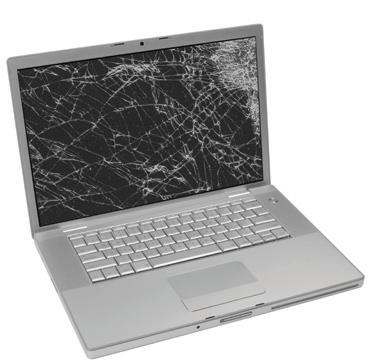
Bring leftover paint, fluorescent bulbs, small household electronics, pesticides and other items that don’t go in the trash to The Recycling Zone for free. There’s a $10 fee for TV and computer monitors and a fee for tires, based on size.


3365 Dodd Road, Eagan, MN
Hours — open weekly:
• Wednesday 9 a.m.–8 p.m.
• Thursday ..............noon–8 p.m.
• Friday 9 a.m.–5 p.m.
• Saturday 8 a.m.–5 p.m.
www.dakotacounty.us, search Recycling Zone.
5
Leading the way to a better future


Solid waste plan revision
Dakota County is revising its Solid Waste Management Plan that guides how waste is managed over the next 20 years. The plan will include strategies to reduce waste going to landfills, make progress toward the state’s goal to recycle 75 percent of waste by 2030, and implement the Minnesota Pollution Control Agency’s Metropolitan Solid Waste Management Policy Plan.
To learn more and how you can provide feedback, visit www.dakotacounty.us, search solid waste management plan.
Your feedback is needed
The Vermillion River Watershed Joint Powers Organization (VRWJPO) is seeking public feedback for its next generation Watershed Management Plan. Join VRWJPO and community members at a series of public meetings. For more information about the plan and dates of upcoming events, visit www.vermillionriverwatershed.org, search watershed plan.
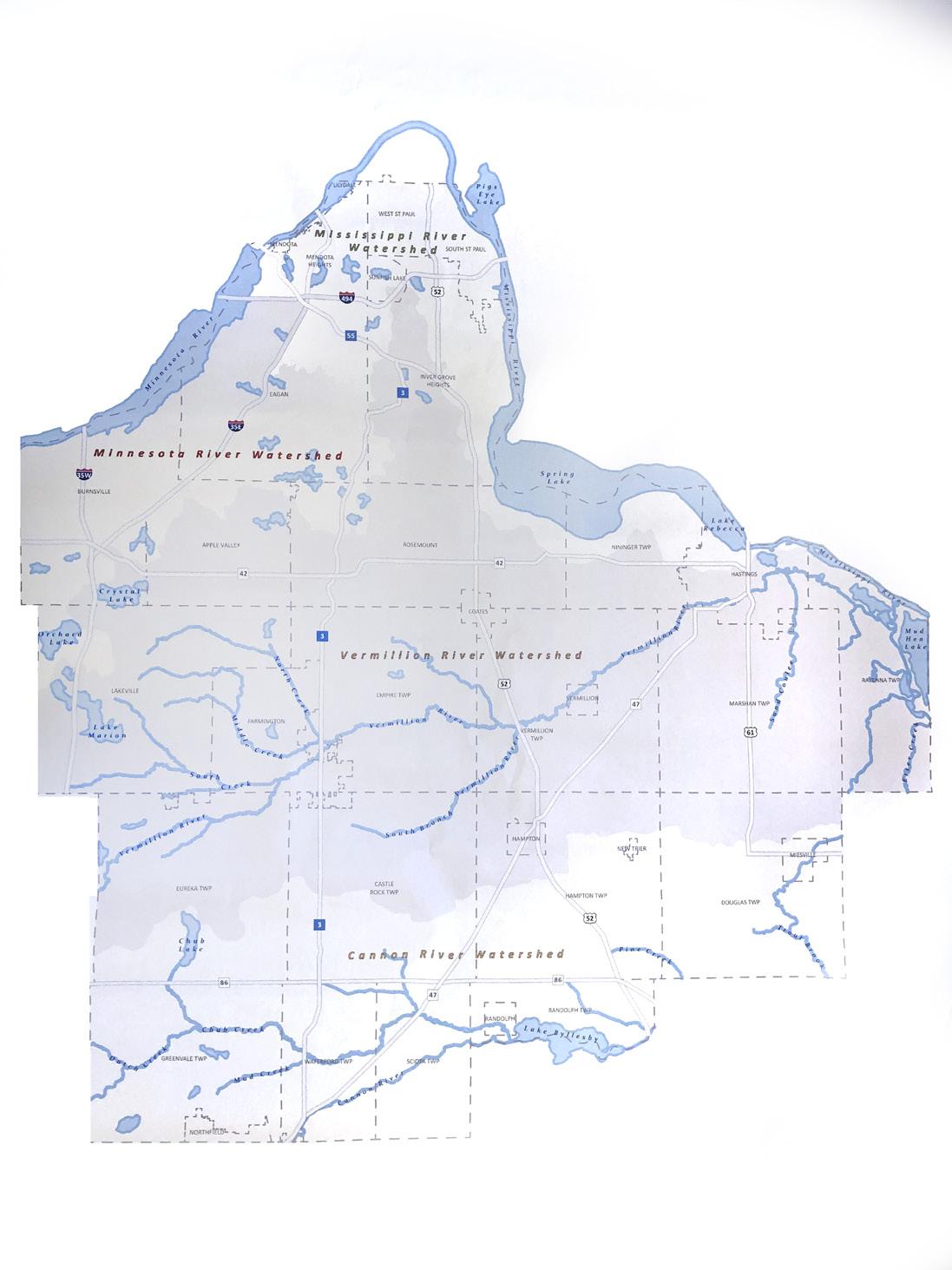
6
Where your yard drains. Ponds, Creeks, Rivers and Lakes. Mississippi River Watershed Minnesota Vermillion River Watershed Cannon Watershed
Conservation practices promote healthy soil & clean water
Cover crops help reduce soil erosion, improve soil health, decrease weeds and protect groundwater quality by reducing nitrate losses an average of 70 percent. Common cover crops used in Dakota County include oats, tillage radish, clover, cereal rye and winter wheat.
Perennial vegetation can create a healthy soil environment while also catching rainwater with its deep root systems. It can also collect 97 percent more nitrogen than annual row crops, reducing the cost of nitrogen inputs. Perennial vegetation such as Kernza, switchgrass, alfalfa, or hay can be added into cropping systems, or by converting marginally productive croplands into native prairie.
Funding and technical assistance is available to farmers. To learn more, contact the Dakota County Soil and Water Conservation District at 651-480–7777, the Dakota County USDA-NRCS at 651-463–8665 or visit www.dakotaswcd.org.

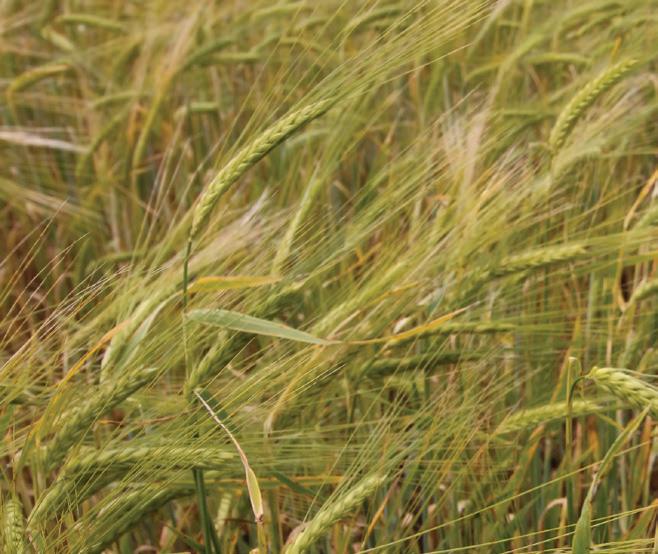

7
Winter wheat
Cereal rye
Oats
Test your well water
Protect your health. Test your well water for:
Coliform Bacteria
Every year
Nitrate
Every other year
Arsenic
At least once
Lead
At least once
Manganese
At least once Call 952-891-7000 or visit www.dakotacounty.us, search water test kit.

Take care of your septic system
A properly maintained septic system safeguards your family’s health, protects the environment and can save money on repairs. Follow these tips:
• Don’t overload the commode. Toss wipes labeled flushable as they don’t belong in your septic system. Flush toilet paper only.
• Think at the sink. Limit garbage disposal use. Avoid pouring fats, grease, solids and harsh chemicals down the drain.
• Don’t strain the drain. Stagger the use of waterbased appliances like dishwashers and washing machines. Make sure they’re energy efficient.
• Protect the drain field. Divert rain and surface water away, never park or plant trees on your drain field.
• Pump the tank. Hire a professional to pump and check the septic system tank every three years.
• Test private wells. Test drinking water from your private well to ensure it remains free of contamination.
To learn how a septic system works, visit www.epa.gov, search how septic systems work.
8
Be Nitrogen Smart
Nitrogen Smart training is coming to Dakota County spring of 2024. Offered by the University of Minnesota Extension, the training will provide farmers the fundamentals of nitrogen management for row crop agriculture and to help maximize economic return on nitrogen investments while minimizing losses. The course will be offered online or in person.
In-person training:
Contact Matthew Belanger at 952-891-7132 or visit www.dakotaswcd.org, search land and water.
Online course: Visit www.extension.umn.edu, search nitrogen smart online

Nitrogen fertilizer best practices
The Minnesota Department of Agriculture, along with the input from area farmers and agronomists, published a list of nitrogen fertilizer Best Management Practices for the Hastings Drinking Water Supply Management Area (DWSMA). These practices will help reduce nitrate loss to the local water supply and are expected to be adopted on at least 80 percent of the area cropland. Compliance will be monitored by the 2026 growing season.
To view a map of the DWSMA, visit www.mda.state.mn.us, search Hastings DWSMA.
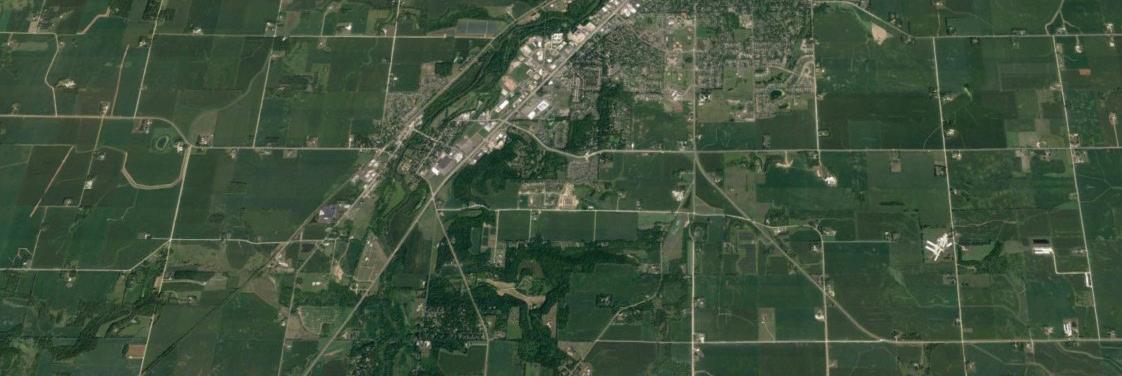
9
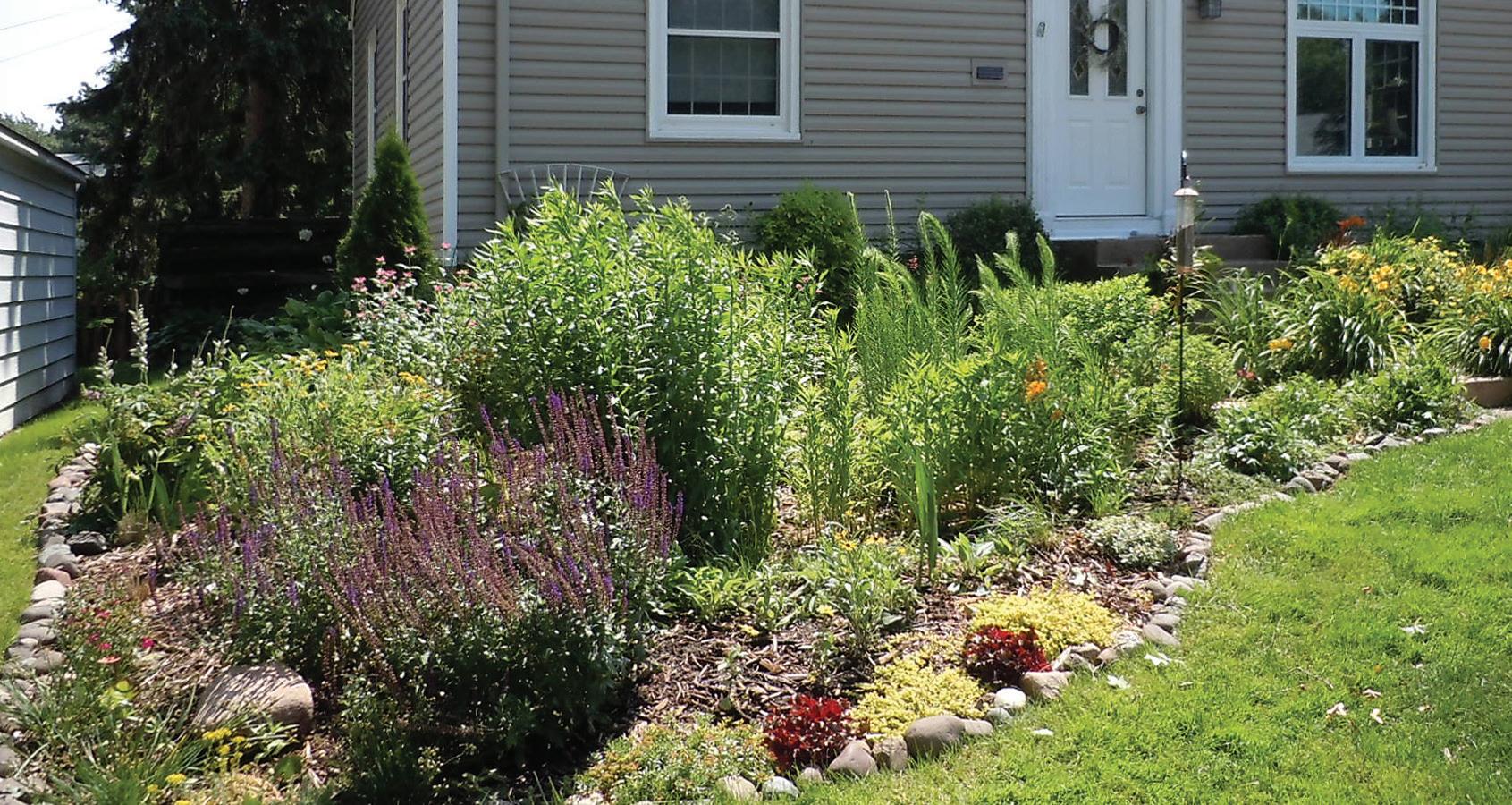
Landscape for clean water
Dakota County Soil & Water Conservation District, along with local cities and watershed management organizations, offers Landscaping for Clean Water, a series of informational classes and workshops. Residents will learn about gardening projects that beautify your yard while improving water quality, benefiting pollinators and protecting shorelines.
Programming begins spring 2024 and is available both in person and online. To sign up or to be notified when registration opens, visit www.dakotaswcd.org, search landscape, email lcw@co.dakota.mn.us or call 651-480-7777.
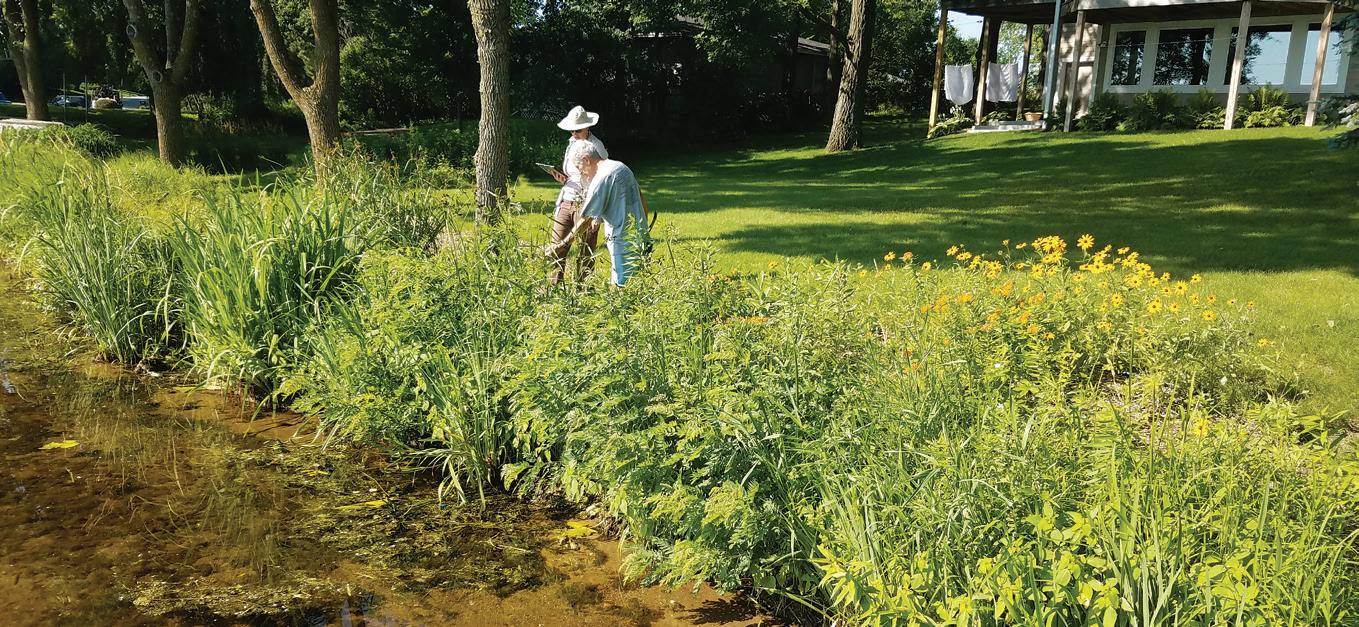
10
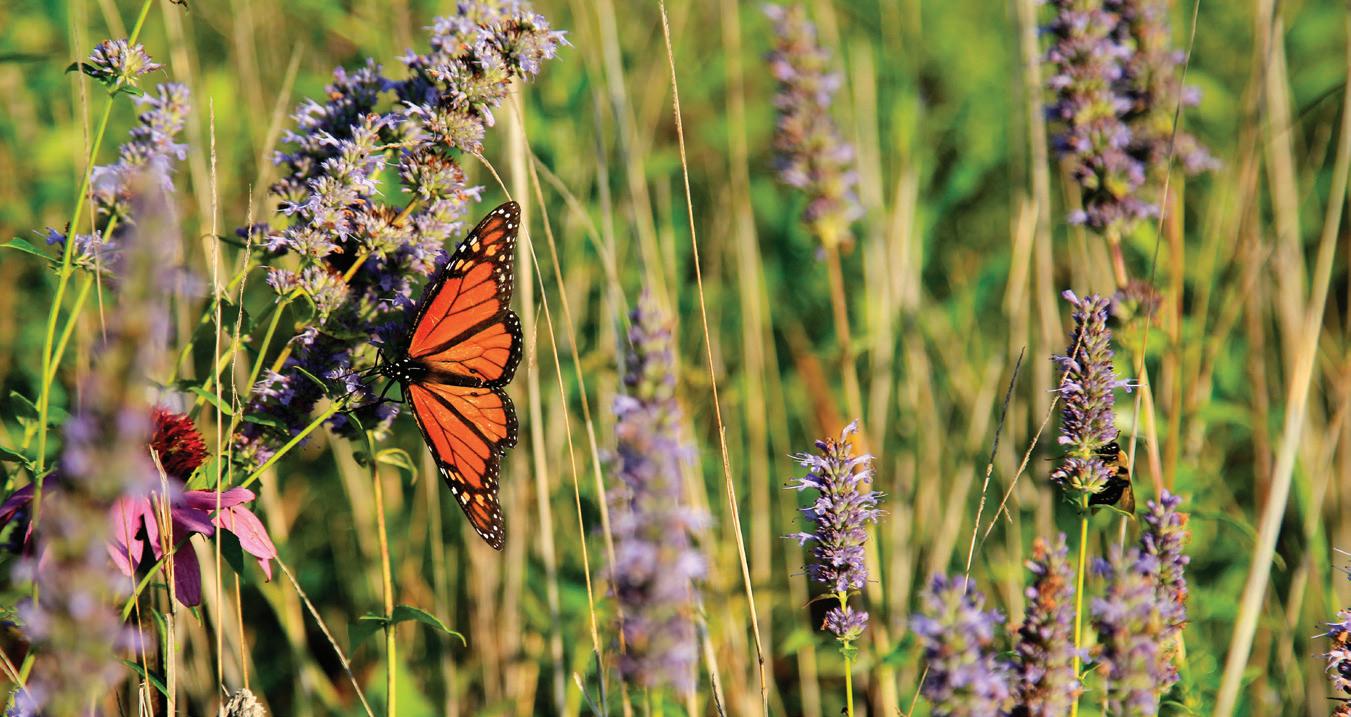
Native prairie restoration program
Planting native prairie plants on your property can offer a widerange of benefits including improving soil health, trapping carbon, promoting infiltration of water, and they require fewer inputs and labor over time compared to regular grass. Native plants also provide food and habitat for birds, pollinators and other wildlife.
Funding and technical assistance is available. Landowners can receive cost-share funding for up to 85 percent of total project costs for the installation or enhancement of native prairie vegetation.
For more information, visit www.dakotaswcd.org or contact swcd@co.dakota.mn.us or 651-480-7777.
Explore conservation projects
Learn about water quality projects in your community with GIS, a mapping tool that allows you to explore data. Soil & Water Conservation District and the Vermillion River Watershed Joint Powers Organization maintain data on conservation projects that benefit water quality including cover crops, wetland restorations, native prairie strips and more.
Scan the QR code to find water quality conservation projects.
11

Monthly e-news
Sign up for Dakota County’s e-news service and get environmental tips delivered to your inbox and be the first to know about recycling and water events. Visit www.dakotacounty.us, search e-news , choose Environmental Resources News for Residents.
Funded by Dakota County and the Minnesota Pollution Control Agency. Printed on paper that contains fiber from responsibly harvested and managed forests. Paper containing 100% recycled content and 100% post-consumer waste. Processed chlorine-free.
101-2-01-2023

Environmental Resources Western Service Center 14955 Galaxie Avenue Apple Valley, MN 55124
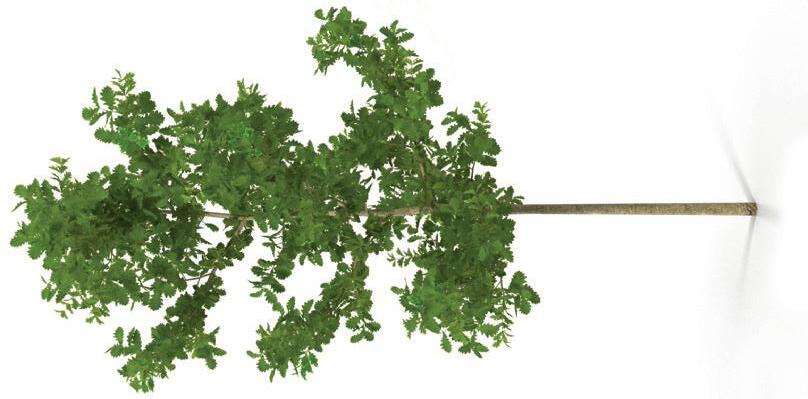
2024 tree sale
Dakota County residents can purchase high-quality bare root seedlings at a low cost from the Soil & Water Conservation District. Trees can be used for urban and rural conservation purposes such as windbreaks, living fences, reforestation, erosion control, and food and cover for wildlife. The tree species are native to Minnesota including conifers, deciduous trees and shrubs. To preview the 2024 tree species or to be notified of the sale, visit www.dakotaswcd.org, search 2024 tree sale or contact SWCD@co.dakota.mn.us or 651-480-7777.
PRST STD U.S. POSTAGE





































